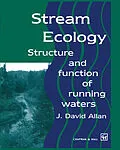Running waters are enormously diverse, ranging from torrential mountain brooks, to large lowland rivers, to great river systems whose basins occupy subcontinents. While this diversity makes river ecosystems seem overwhelmingly complex, a central theme of this volume is that the processes acting in running waters are general, although the settings are often unique. The past two decades have seen major advances in our knowledge of the ecology of streams and rivers. New paradigms have emerged, such as the river continuum and nutrient spiraling. Community ecologists have made impressive advances in documenting the occurrence of species interactions. The importance of physical processes in rivers has attracted increased attention, particularly the areas of hydrology and geomorphology, and the inter-relationships between physical and biological factors have become better understood. And as is true for every area of ecology during the closing years of the twentieth century it has become apparent that the study of streams and rivers cannot be carried out by excluding the role of human activities, nor can we ignore the urgency of the need for conservation. These developments are brought together in Stream Ecology: Structure and function of running waters, designed to serve as a text for advanced undergraduate and graduate students, and as a reference book for specialists in stream ecology and related fields.
Inhalt
Preface. 1: Channels and flow. Hydrology. Characteristics of river channels. 2: Streamwater chemistry. Dissolved gases. Major dissolved components of river water. The bicarbonate buffer system, alkalinity and hardness. Influence of chemical factors on the biota. 3: Physical factors of importance to the biota. Current. Substrate. Temperature. Oxygen. 4: Autotrophs. Periphyton. Macrophytes. Phytoplankton. 5: Heterotrophic energy sources. Decomposition of coarse particulate organic matter. Fine particulate organic matter. Dissolved organic matter. 6: Trophic relationships. The microbial loop. Invertebrate consumers. Feeding ecology of riverine fishes. Lotic food webs. 7: Predation and its consequences. Choice and vulnerability. Predator control of prey distribution and abundances. 8: Herbivory. Periphyton-grazer interactions. Herbivory on macrophytes. Grazing on lotic phytoplankton. 9: Competitive interactions. Distributional patterns and resource partitioning. Experimental studies of competition. 10: Drift. Composition and periodicity. Drift and downstream displacement. Functional basis of drift. 11: Lotic communities. Local and regional diversity. Community structure. 12: Organic matter in lotic ecosystems. Dynamics of dissolved and particute organic matter. Fate of dissolved and particulate organic carbon. Organic matter budgets. The river continuum concept. 13: Nutrient dynamics. Basic principles of nutrient cycling. Nutrient concentrations in running waters. Transport and transformation of nutrients. 14: Modification of running waters by humankind. Brief history of river modification. Dams and impoundments. Transformation of the land. Alien species. Climate change. Imperilment of the biota. Recovery and restoration of running waters. References. Index.
